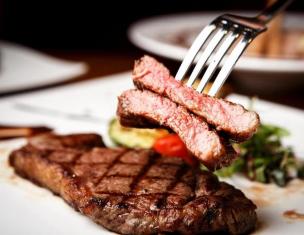Green peas are an indispensable ingredient for Olivier salad and vinaigrette, a good side dish for meat and poultry, and goes well with pasta or mashed potatoes. Green peas are considered quite dietary product. Like all legumes, it is a source of relatively complete protein. In canned food with natural peas, vitamins, such as vitamin C, are perfectly preserved, unlike many products.
When choosing green peas, keep in mind that these canned foods are made either from fresh raw materials or from reconstituted ones.
- Canned food made from reconstituted peas has lower nutritional value than those made from fresh peas.
- Canned food made from fresh green peas contains more vitamin C than those made from dried and then reconstituted peas.
How can it be dangerous? green pea?
As it grows and matures, it accumulates pesticides. Canned food made from low-quality raw materials containing high levels of pesticides can be harmful to health.
Also, canned green peas usually contain salt. Excessive consumption of salty foods can cause diseases of cardio-vascular system, kidney.
Which green peas are better, and what violations are typical for this category, you can find out by reading the results.
Having carefully studied the information about the benefits of green peas, we strongly recommend including them in your daily diet, and not just as part of festive New Year's salads. Fresh and canned peas are a very valuable source of vegetable protein, carbohydrates and vitamins. It has a high content of mineral salts and trace elements. It is useful for the prevention of diseases of the cardiovascular system, as well as for maintaining the body’s performance and energy. Let's figure out what you should pay attention to when buying it.

Appearance of the can
Most often, peas are sold in tin cans, depriving us of the opportunity to examine their contents. However, even the appearance of the can can tell us a lot about the quality of the product. It must be free of dents, rust and chips: any damage can result in the enamel inside chipping and falling into the plate. When buying a glass jar, pay attention to the lid: it should not be swollen.
Compound
The only possible composition of high-quality peas is: fresh peas, water, sugar. Any addition of preservatives indicates low quality of the product. Peas must be produced in accordance with GOST and correspond to the highest grade. The brain variety is considered the best; after cooking and canning it turns even greener. If you see the name of this variety on the packaging, choose it. It is good both in salads and in soups and side dishes, it is very healthy and has an excellent taste.
Date of manufacture
When purchasing, it is important to look not only at the expiration date, but also at the date of manufacture: the tastiest and highest quality peas will be those made in July, that is, immediately after harvest. If it was made in the fall or winter, then most likely dry peas were used for its production.
Kind of peas
After opening the jar, evaluate the appearance of the peas: they should be whole, bright, without separated skins or sprouts. The color of canned peas can be green, light green or have a slightly yellowish tint to green. Peas must be the same color and shape. If this is not the case, some of the peas are different in color or shape - you should not eat the contents of this jar. The brine should be clear - a cloudy white sediment at the bottom of the jar indicates that the peas contain a lot of starch, that is, the product is overripe and will be hard.
We continue the topic “How to choose...” and this time the object of my attention was an equally popular product for the New Year's table - canned Green Peas!
As you know, almost no salad can do without it. And during the holidays it is one of the popular products on the shelf.

Green peas are very useful product in any form.
And even when canned, green peas retain almost all of their valuable properties. nutrients with which it is so rich: potassium salts, phosphorus, calcium, B vitamins, carotene, vitamin C and PP, oxalic acid, purines, fiber. And green pea protein contains all the essential amino acids, albeit in small quantities.
This concludes my short excursion about usefulness.
And now I’ll tell you how to choose delicious canned green peas.
1. Inspect the appearance of the container.
Canned green peas on our shelves are more often found in cans.
When purchasing, you need to pay attention, first of all, to the appearance of the can.
Cans that are dented or touched by rust should never be taken, because a piece of enamel inside could break off.
And when the metal interacts with the product, oxidation of the metal will occur. And this will negatively affect the quality of the product.
Under no circumstances should you use such a product!
Glass containers are definitely better! Here you can evaluate the color and appearance of the peas.
But when examining glass containers, you also need to be careful: the lid should not be swollen.
This means that air has entered the jar, and this can also lead to oxidation of the product, and the product will be dangerous to your health.
2. Appearance product (in glass containers)
The peas should be whole, bright, without separated skins or sprouts.
The color of canned peas can be green or light green

olive
or even yellow

But the peas must be the same color and shape.
If there are brown beans in the jar, the batch is defective!
A cloudy white sediment at the bottom of the jar indicates that there is a lot of starch in the peas, that is, the product is overripe and will be tough.
3. We carefully study the label!

The most important thing is to choose green peas according to GOST (GOST 15842-90) and pay attention to the type of canned food: the most delicious peas will be premium or "extra"!
Reading the composition.
Ideal composition: fresh vegetable peas, water, sugar, salt.
If a preservative is used, it means the technology is broken or something is wrong with the equipment.
It also contains calcium chloride: it is a hardener.
I also do not recommend buying these peas.
First, let's look at the varieties of green peas:
- brain - the highest grade. After cooking it turns even greener. Smooth grain - contains less sugars. After cooking it becomes gray-green in color; sugar - not processed;
PS. The word "brain" on a can of canned peas means it's... best variety sugar snap peas.
Look not only at the expiration date, but also at the manufacturing date.
The most delicious peas are obtained during the harvest season: June or July.
If the peas were made in winter or autumn, then dry peas were used, those that were previously soaked and steamed, and then preserved. Such a product is unlikely to retain the vitamins and other beneficial properties of green peas, and its taste will be strongly reminiscent of starch.
Sometimes on store shelves you can find canned food made from freeze-dried peas that have undergone a “recovery” process. But the quality of such canned peas is much lower than that of brain peas. Freeze-dried peas are usually manufactured according to specifications. It tastes harsher. Although the price per jar is much lower. You can also recognize it by the date of manufacture.
Happy shopping!
It is a popular ingredient for making salads. It is used as a side dish for meat dishes and for other purposes. This product has a lot useful properties, which are preserved during its conservation. It is a canned product of this type that is most often used in cooking, since fresh green peas retain their juiciness and other qualities for a short time after harvesting.
Green pea quality standards
Helps to select and evaluate peas GOST R 54050-2010, which applies to canned natural products of this type. According to this standard, peas are divided into products of the highest, first and second commercial grade.
- The grains must be whole and without any impurities of the shells.
- The presence of brown fodder peas in canned food is excluded.
- The smell is weak, natural, characteristic of canned green peas. There should be no foreign tastes or aromas.
- The color of the beans is uniform in one package: light green or olive.
- The highest grade is characterized by a soft, uniform consistency. For the first there is a soft, heterogeneous consistency and for the second, a harder, heterogeneous consistency.
- The fill should be transparent with a greenish or olive tint.
- Depending on the variety, up to 6-10% of the mass fraction of broken grains is acceptable.
- Products of the first and second grade may have a slight starchy aftertaste.
- Single grains are possible that differ in color from the bulk of the peas.
- The presence of a small sediment of pulp particles and slight turbidity is acceptable for premium products.
- There may be a sediment in the form of starch and a cloudy filling of green peas; GOST allows this for goods of the first and second grade.
- There should be no mineral or other foreign impurities.
- The mass fraction of peas in canned food is at least 60%.
How to choose green peas?
GOST provides information on what the product should be. But in the store it is in packaging, usually in an iron can. How to understand in such a situation which peas are better? There are several tips for buyers to help in this matter.
- Choose jars with the production date printed on them. If it is cut out on the paper label or embossed on the bottom of the lid, this indicates outdated equipment for the production of canned peas.
- The best choice is green peas that were canned in May or June, which you will know by the production date. During these months, young but already mature peas are harvested.
- Choose products manufactured in accordance with GOST, which must indicate the commercial grade - highest, first or second.
- You can shake the jar of peas. If there is no sound of pouring pouring, then the manufacturer has not spared the product for canning. The presence of knocking, dull sounds indicates old and hard peas in a jar with a small volume of filling. It is better not to buy such a product.
When you open canned green peas, pay attention to the color of the grains. If they are green, such products can be used for making salads and as a side dish. A yellowish color indicates that the peas are overripe and more rigid. This product is best used in cooking, adding it to various dishes with additional processing: boiling, stewing, and so on. Brown pea grains are defective and should not be eaten.








